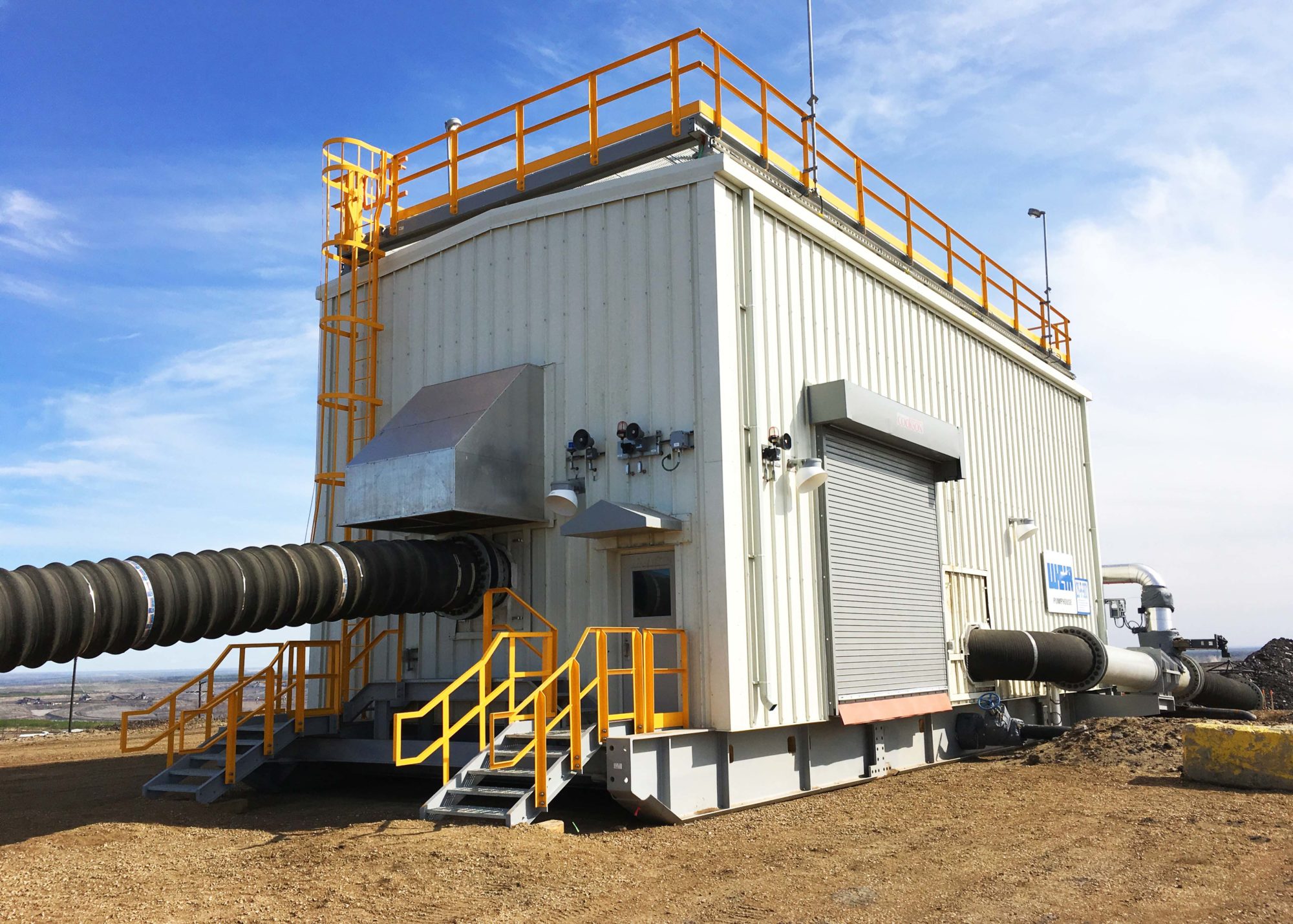Weir Minerals Africa says its mobile pumphouse is ideally equipped for the needs of mine tailings operations.
As the company explains, pumping slurry to tailings facilities requires a solution that can move as the dam expands to allocate room for additional tailings.
Weir Minerals Africa Pumps Product Manager, Marnus Koorts, says a mobile pumphouse completely avoids the cost of any civil engineering for permanent on-site pump buildings. “Instead, it is designed to be moved as required across the site, using its own specifically engineered, skid and jack-and-roll elements,” he said.
Koorts says the offering is part of Weir Minerals Africa’s engineered-to-order solutions, which also reduces the long-term total cost of ownership. The three-point Warman® Multiflo® pump mounting system allows the base and skid to act independently. This minimises the risk of misalignment between the pump and motor shaft during operation and relocation. The unit incorporates an integral gland water supply system and a separate electronic house for power control and remote communication.
Koorts highlights that as a mine’s process plant matures, the tailings line grows with new tailings dams being created, often using Linatex hoses and Isogate valves. It is a significant advantage to be able to move the pumphouse, and to add pumps to the tailings line if the increased distance requires more pressure. It is also an important contributor to reducing initial capital costs.
The design of the mobile pumphouse, he emphasises, sets a new standard for tailings management applications, providing the customer with the tools and equipment to rapidly reconfigure their pumping network, with the ability to move it to other sections of the tailings pond.
Weir Minerals solutions include Multiflo pump barges and floating pontoons mounted with Warman SHW submersible slurry pumps for extracting the fluid tailings. Its Warman slurry pumps are ideal for boosting recovered tails from the pond, to drive the new tailings treatment process plant, the company says.
Koorts emphasises that, with increased scrutiny and pressure to improve the management of tailings, it is more important than ever to look at different methods that are innovative and fit-for-purpose.











